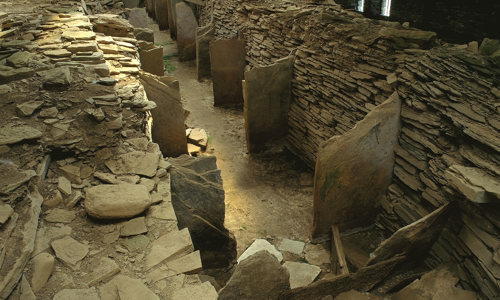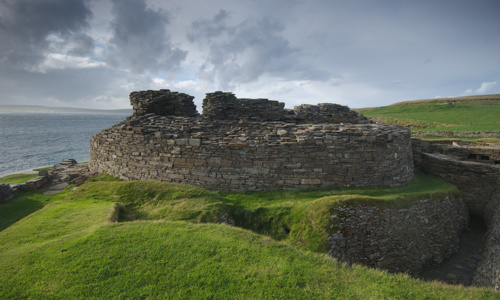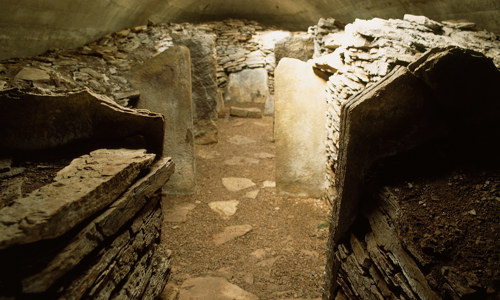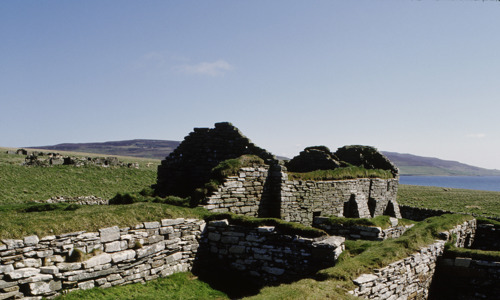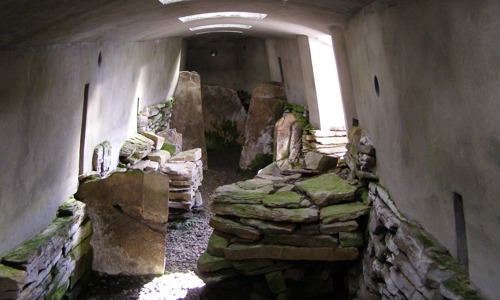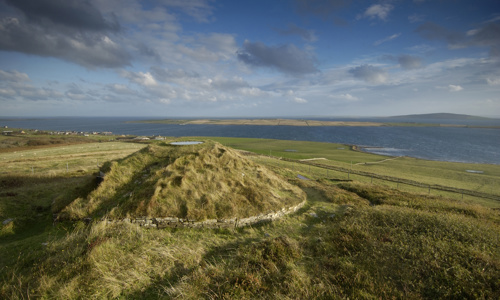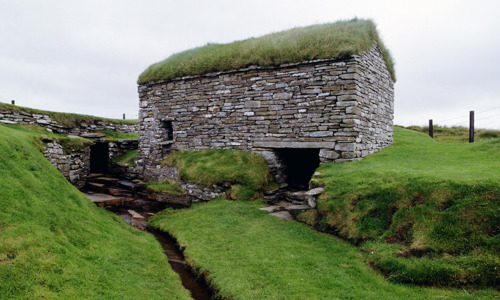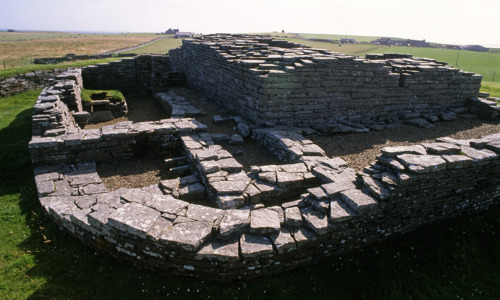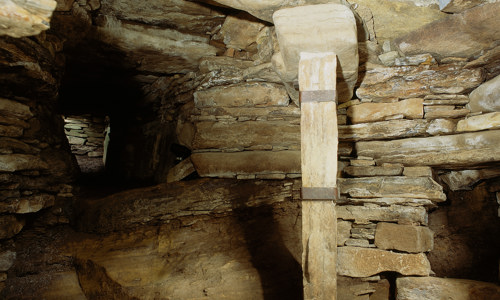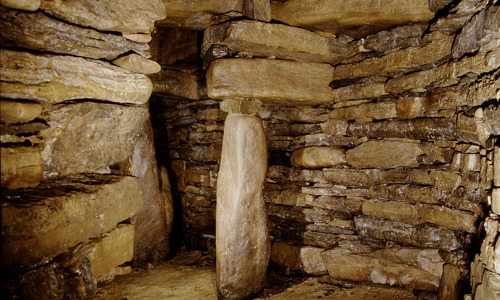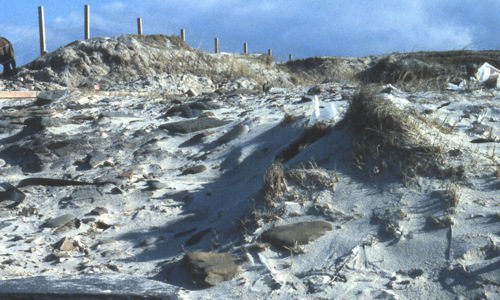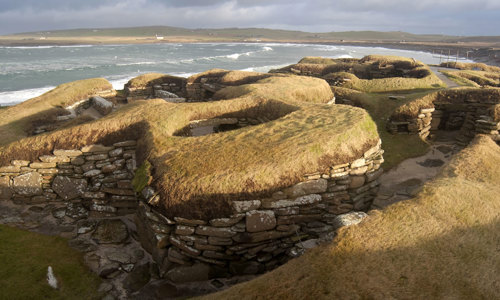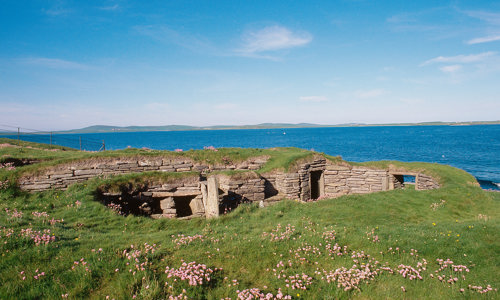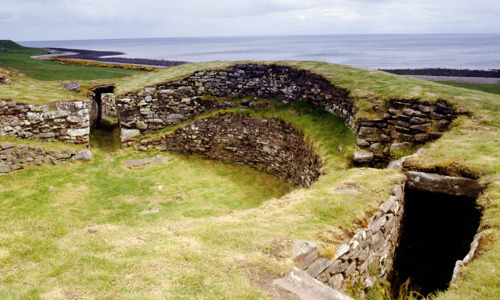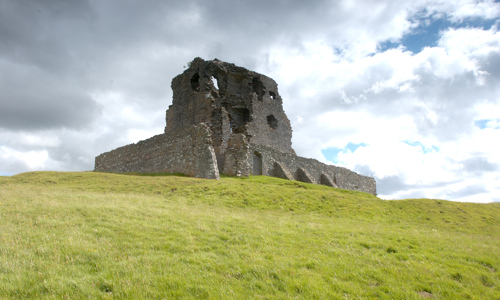History
Brochs are unique to Scotland. There are more than 500 of them, mostly in the northern and western Highlands and the islands.
Many brochs stood alone, but sizeable villages often surrounded those in Orkney. The broch village at Gurness is one of the most impressive. It has also been excavated and so gives a more vivid impression of life in the Middle Iron Age than similar sites.
A thousand years of settlement
Archaeological excavations in the early 20th century showed that the village began between 500 BC and 200 BC.
Deep ditches and ramparts defined a large area roughly 45m across. An entrance causeway was later added on the east side and a circular broch tower built in the west half. A settlement of small stone houses with yards and sheds grew up around the broch tower.
The broch was abandoned and the ditches filled in sometime after AD 100. The site was then a single farmstead until around the 8th century.
Next to the visitor centre are the relocated remains of a late Iron Age or Pictish house. The last activity here took place in the 9th century, when a Viking woman was buried with her grave-goods.
The broch layout
Broch of Gurness was probably home to the chief family of the community. With its massively thick walls, it may also have been a defensive refuge.
The broch originally had a:
- single central hearth
- ring of stone-built cupboards around the wall
- sunken water basin – this is traditionally interpreted as a well, but it may also have been used for rituals
- set of stairs between the broch walls, which led to the upper floors and to the wall-head
This layout was altered when the broch began to collapse. The well was filled in and the interior refitted with new partitions.
The broch village
The village at Gurness is the best-preserved of all broch villages. There are numerous houses. The entrance of each led to a large living and sleeping room, off which were smaller side rooms.
The main room had:
- a hearth
- a large tank set into the floor
- cupboards
- sleeping spaces
Some houses had a yard, which was open to the sky, and a shed.
A Viking grave
The Vikings who settled in Orkney from about AD 800 often used the mounds of earlier settlement sites as burial places. The grave of a Viking woman was found at Gurness, along with some grave-goods – a sickle blade and a pair of ‘tortoise’ brooches.
Human bones and Viking objects such as shield bosses have also been found, suggesting that others were buried here too.
Natural history
Eynhallow Sound, between the Orkney mainland and the island of Rousay, would have been a vital resource for the early inhabitants.
Archaeology has shown that cod, whale and seal were part of the diet, and sources of skins and oil as well. Orca and minke whales are still seen in the sound.


